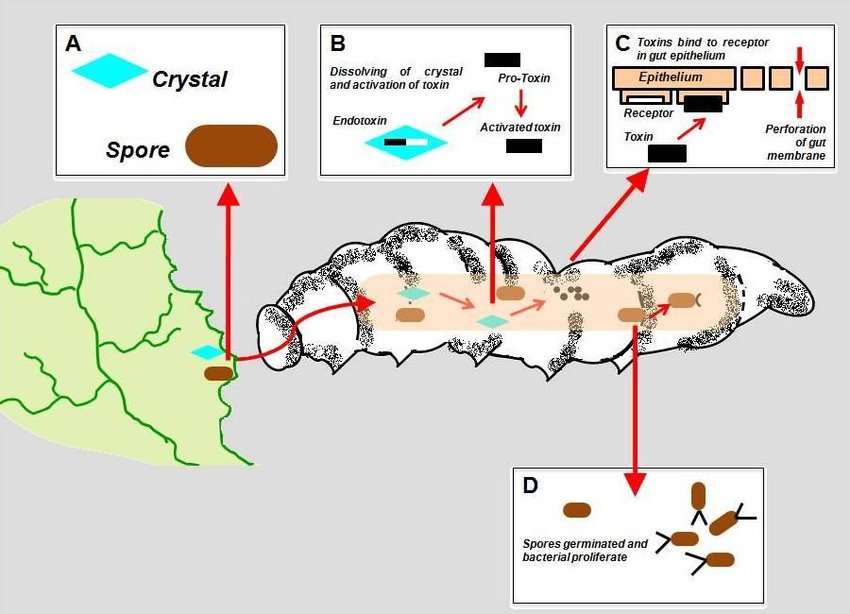With the meticulous selection of microbial agents, the theatrical performance of dragon fruit pest control advances to the application of microbes. This critical act involves the strategic deployment of Bacillus thuringiensis and Beauveria bassiana, the chosen microbial protagonists. In a choreography of precision, various application methods, from sprays to powders, are employed to ensure the optimal efficacy of these microbial allies in safeguarding the dragon fruit orchard.
Table of Contents
Application of Microbes
1. Strategic Application
The process begins with the strategic application of the selected microbial agents. This step is not a one-size-fits-all approach but a tailored solution that considers the unique needs of the dragon fruit orchard. Different formulations, such as sprays or powders, are chosen based on the characteristics of the crop, prevailing environmental conditions, and the specific pests targeted.
2. Timing Is Critical:
The success of microbial pest control hinges on the impeccable timing of application. The deployment of Bacillus thuringiensis and Beauveria bassiana must align with the life cycles of the targeted pests. By synchronizing with nature’s rhythm, the microbial agents can intercept the pests at vulnerable stages, maximizing the impact on their populations while minimizing the environmental footprint.
3. Penetration and Precision: Bacillus thuringiensis Unleashed

Cry Proteins and Caterpillar Conquest
As Bacillus thuringiensis takes center stage, its weapon of choice is the production of Cry proteins. These proteins are meticulously engineered to target the digestive systems of specific insect larvae, particularly caterpillars. Upon application, the Cry proteins penetrate the defenses of the caterpillars, disrupting their digestive processes and ultimately leading to their demise.
Minimal Impact on Non-Targets
The precision of Bacillus thuringiensis is a key advantage. While devastating to caterpillars, it poses minimal risk to beneficial insects, ensuring the preservation of pollinators and other non-target organisms. This surgical precision minimizes collateral damage and upholds the eco-friendly ethos of microbial pest control.

4. Infiltration and Reduction:
Fungal Tactics Against Beetles
Simultaneously, Beauveria bassiana orchestrates a tactical assault against beetle pests. This entomopathogenic fungus excels in infiltrating the exoskeleton of beetles upon application. Once inside, it initiates infection, disrupting the life cycles of the beetles and significantly reducing their populations.
Preserving Orchard Vitality
Beauveria bassiana’s prowess lies not only in its ability to combat beetles effectively but also in its selective targeting. The fungus acts as a guardian, preserving the vitality of the dragon fruit orchard while strategically eliminating specific threats.

5. Eco-Friendly Residue: Nature’s Fading Footprint
As the microbial agents fulfill their roles in pest control, they leave behind an eco-friendly residue. Unlike chemical pesticides that may linger in the environment, these residues from Bacillus thuringiensis and Beauveria bassiana degrade naturally. This ensures that the dragon fruit orchard is not only protected but also experiences minimal long-term impact on the ecosystem.
6. Continuous Vigilance: Adapting with Environmental Dynamics
The microbial pest control saga doesn’t conclude with application but extends into a continuous vigilance. Farmers and researchers must monitor the efficacy of the microbial agents, adapting their strategies in response to changing environmental dynamics, pest pressures, and the evolving needs of the dragon fruit orchard.
Conclusion: A Symphony of Microbial Defense
In the grand performance of dragon fruit pest control, the application of microbial agents stands as a symphony of precision and eco-friendliness. The strategic deployment of Bacillus thuringiensis and Beauveria bassiana, synchronized with nature’s rhythm, showcases the artful integration of science and nature.
As the dragon fruit orchard becomes the stage for this microbial ballet, the mission to safeguard against pests unfolds with surgical precision and minimal environmental impact. The curtain rises on a sustainable and resilient agricultural landscape, where the orchestrated defense of microbial allies ensures the flourishing of dragon fruit crops
